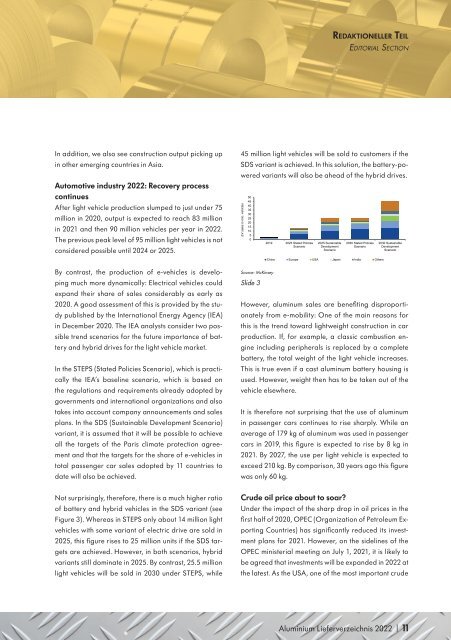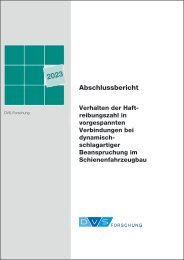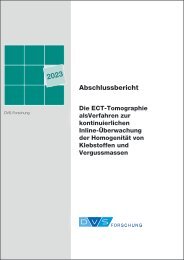Aluminium_Lieferverzeichnis_2022_Leseprobe
Erfolgreiche ePaper selbst erstellen
Machen Sie aus Ihren PDF Publikationen ein blätterbares Flipbook mit unserer einzigartigen Google optimierten e-Paper Software.
REDAKTIONELLER TEIL<br />
EDITORIAL SECTION<br />
In addition, we also see construction output picking up<br />
in other emerging countries in Asia.<br />
Automotive industry <strong>2022</strong>: Recovery process<br />
continues<br />
After light vehicle production slumped to just under 75<br />
million in 2020, output is expected to reach 83 million<br />
in 2021 and then 90 million vehicles per year in <strong>2022</strong>.<br />
The previous peak level of 95 million light vehicles is not<br />
considered possible until 2024 or 2025.<br />
By contrast, the production of e-vehicles is developing<br />
much more dynamically: Electrical vehicles could<br />
expand their share of sales considerably as early as<br />
2020. A good assessment of this is provided by the study<br />
published by the International Energy Agency (IEA)<br />
in December 2020. The IEA analysts consider two possible<br />
trend scenarios for the future importance of battery<br />
and hybrid drives for the light vehicle market.<br />
In the STEPS (Stated Policies Scenario), which is practically<br />
the IEA’s baseline scenario, which is based on<br />
the regulations and requirements already adopted by<br />
governments and international organizations and also<br />
takes into account company announcements and sales<br />
plans. In the SDS (Sustainable Development Scenario)<br />
variant, it is assumed that it will be possible to achieve<br />
all the targets of the Paris climate protection agreement<br />
and that the targets for the share of e-vehicles in<br />
total passenger car sales adopted by 11 countries to<br />
date will also be achieved.<br />
Not surprisingly, therefore, there is a much higher ratio<br />
of battery and hybrid vehicles in the SDS variant (see<br />
Figure 3). Whereas in STEPS only about 14 million light<br />
vehicles with some variant of electric drive are sold in<br />
2025, this figure rises to 25 million units if the SDS targets<br />
are achieved. However, in both scenarios, hybrid<br />
variants still dominate in 2025. By contrast, 25.5 million<br />
light vehicles will be sold in 2030 under STEPS, while<br />
45 million light vehicles will be sold to customers if the<br />
SDS variant is achieved. In this solution, the battery-powered<br />
variants will also be ahead of the hybrid drives.<br />
EV sales in mio. vehicles<br />
50<br />
45<br />
40<br />
35<br />
30<br />
25<br />
20<br />
15<br />
10<br />
5<br />
0<br />
Source: McKinsey<br />
Slide 3<br />
2019 2025 Stated Policies<br />
Scenario<br />
2025 Sustainable<br />
Development<br />
Scenario<br />
2030 Stated Policies<br />
Scenario<br />
China Europe USA Japan India Others<br />
2030 Sustainable<br />
Development<br />
Scenario<br />
However, aluminum sales are benefiting disproportionately<br />
from e-mobility: One of the main reasons for<br />
this is the trend toward lightweight construction in car<br />
production. If, for example, a classic combustion engine<br />
including peripherals is replaced by a complete<br />
battery, the total weight of the light vehicle increases.<br />
This is true even if a cast aluminum battery housing is<br />
used. However, weight then has to be taken out of the<br />
vehicle elsewhere.<br />
It is therefore not surprising that the use of aluminum<br />
in passenger cars continues to rise sharply. While an<br />
average of 179 kg of aluminum was used in passenger<br />
cars in 2019, this figure is expected to rise by 8 kg in<br />
2021. By 2027, the use per light vehicle is expected to<br />
exceed 210 kg. By comparison, 30 years ago this figure<br />
was only 60 kg.<br />
Crude oil price about to soar?<br />
Under the impact of the sharp drop in oil prices in the<br />
first half of 2020, OPEC (Organization of Petroleum Exporting<br />
Countries) has significantly reduced its investment<br />
plans for 2021. However, on the sidelines of the<br />
OPEC ministerial meeting on July 1, 2021, it is likely to<br />
be agreed that investments will be expanded in <strong>2022</strong> at<br />
the latest. As the USA, one of the most important crude<br />
<strong>Aluminium</strong> <strong>Lieferverzeichnis</strong> <strong>2022</strong> | 11


















